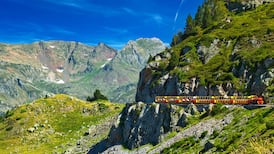“That’s bloody stunning, that is,” were the only words from the Aussie’s mouth as the five of us sat in silence on the summit of Chukkung Ri. The 4am start in bone-chilling wind had been worth it to now peer over the snow-capped peaks of the Himalayas. Sipping from a thermos of coffee, I gazed jealously at the Austrian couple, who had thought ahead to bring a packet of digestive biscuits and some peanut M&Ms.
I was in Nepal, birthplace of Buddha, home to ten of the world's highest climbing peaks, and a land as diverse in geography as in culture. Landlocked between Tibet and India, the country is a vibrant medley of more than 100 different ethnic groups, where customs, religions, and even languages seem to change with each new area you visit.
Having recently graduated, and keen to scratch my travel itch with something other than island hopping in Thailand, I was swept up by the allure of remote landscapes and challenging peaks.
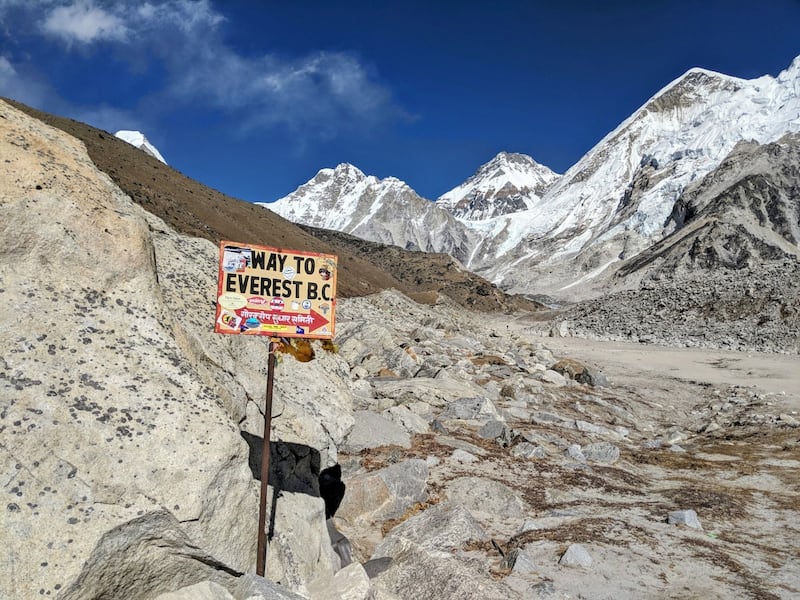
A few months and a few thousand strenuous steps later, I was now into my second of three consecutive treks; Jiri to Lukla, Everest Three Passes, and the Arun Valley trek. Having acclimatised on Chukkung Ri, I would soon start the arduous day-long climb over Kongma La, the first of three 5,000m passes, which alongside Everest Base Camp (5,340m) and Kala Patthar (5,545m), comprise the high altitude 15-20-day Three Passes trek.
While many hikers opt for the shorter 10-15-day direct trek to Everest Base Camp, taking the few extra days to watch the buzzing summiteers at Island Peak base camp, or enjoy one of the best views of Mount Everest from the sacred lakes of Gokyo, is well worth your while.
Sensory overload
With the crisp air, pin drop silence, and sense of solitude, it felt a world away from the chaos of Kathmandu.
Despite rapid urban growth as the city sprawls into the surrounding countryside, the four parallel streets of Thamel in Kathmandu have remained the staple tourist district for decades. On arrival it’s easy to be overwhelmed by the combination of traffic, noisy construction, and rogue cows, who take no shame in wandering into open restaurants.
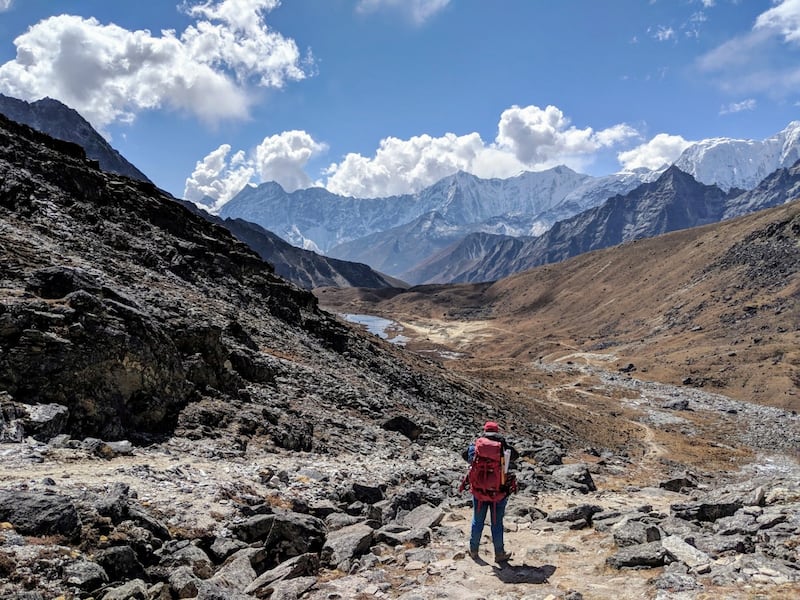
The many hotels, western restaurants and bakeries become clothes stores and spice stalls as you approach the bustling food markets, where quick footed locals supply milk tea and cigarettes to the vendors. Sprinkle a few Buddhist and Hindu monuments around the place and you start to develop a picture of the madness that is Thamel. While a great place to pick up souvenirs, or grab a beer at one of the many “authentic” Irish pubs, it wasn’t long before I was yearning to get out on the trek.
My first week from Jiri to Lukla was a blur of sweat, blisters, and shoulder cramps, as I slowly figured out how to correctly adjust my rucksack straps. Days typically started between 5 and 7am, shovelling down a plate of boiled potatoes or a thermos of porridge and sugar while staring at my torn map. These long trekking days served as a great warm-up for the Everest region, where the oxygen level drops to almost half and each 500m increase in altitude takes an additional toll.
Altitude
Well adjusted to the altitude are the Sherpa and Rai porters, who haul baskets of goods, often weighing more than 50kg, between the mountainous towns using little more than a head strap. At rest stops, western tourists struggle to catch their breath or fish another jumper from their bags, while these guys browse Facebook on their phones or stretch their flip-flop clad feet.
Well-developed paths and infrastructure, paid for primarily by the permit fees collected along the route, have greatly improved the accessibility of this region. While I won’t be dragging my granny there any time soon, I met a great mix of people of all ages and abilities along the way.
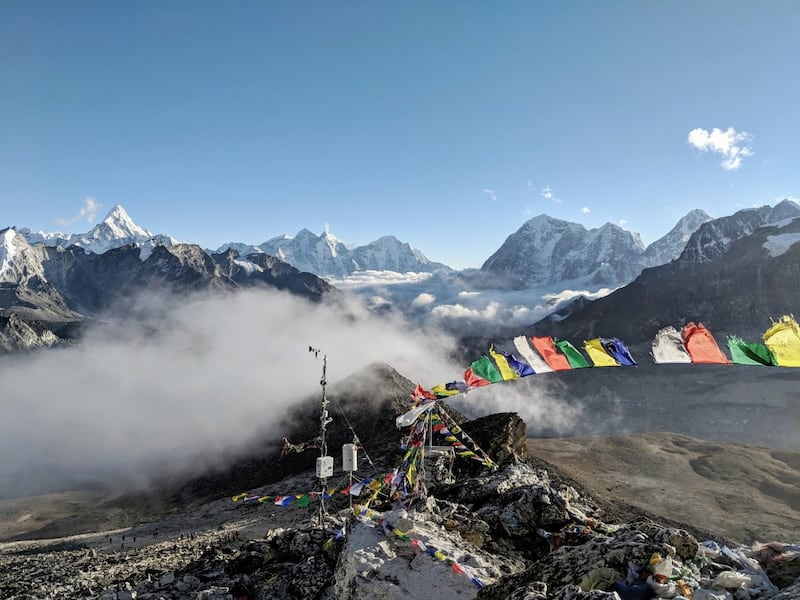
Although the high altitude regions of Everest and Annapurna draw the vast majority of tourists, those seeking a more cultural experience (or simply a break from the cold) should consider the lower altitude alternatives. Some of the top moments of my trip were spent exploring the relatively tourist free Arun-Valley.
On this seven-day trek, there was a real sense of adventure when navigating through the dense forests and remote, misty hillsides, walking for hours at a time without meeting anyone.
With prices increasing the higher in altitude you go, tea-houses lower down will often offer discounted or free rooms, provided you also eat there. If you’re comfortable with what the Lonely Planet terms “local-style” accommodation, these routes are well worth sacrificing showers and mattresses for.
Having just set my rucksack down for the evening, I was often invited into a local home for a meal. These family gatherings often consisted of dal bhat (Nepal’s famous rice and lentil soup dish), local Rakshi (wine) and Chhaang (beer), and many questions about life back home. With nothing asked in return and knowing you may never come back, Nepali people give the Irish a run for their money when it comes to a warm welcome.
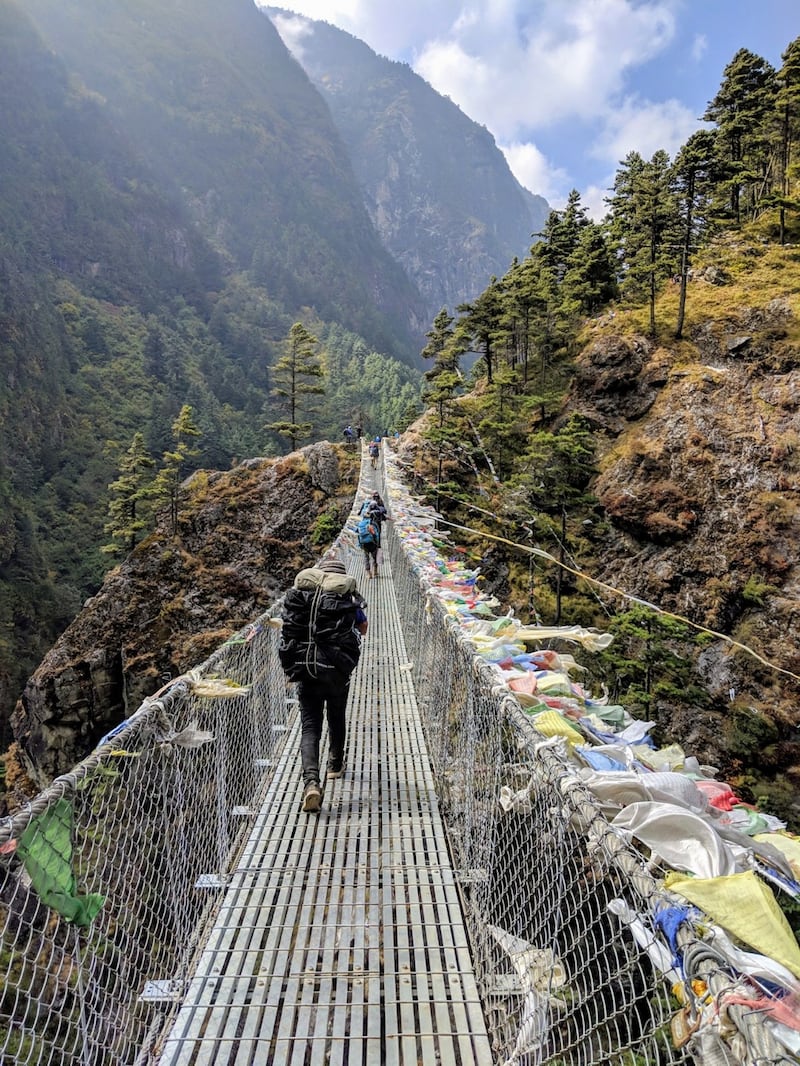
Costs
Nepal is a very affordable travel destination. Accommodation in Kathmandu or Pokhara ranges from €3 to €10 per night, with a meal costing around €5. Alcohol in Nepal is not cheap, however, with a pint setting you back between €3 and €5 at lower altitudes, and up to €7 in the mountains. For this reason, most trekkers opt for much cheaper local brews, typically concocted in a bucket in the back room of someone's home.
While hiring a guide or porter can be helpful if it’s your first time at high altitude, most treks in Nepal don’t formally require one. Guides cost between €20 and €30 per day (plus food costs). Hikers on a tighter budget may prefer the classic map and guidebook combo. Online travel sites advertise prices of up to €4,000 for a trek, but it’s very easy to arrange things yourself or through an agency when you arrive, for a fraction of the cost.
The month I spent in Nepal, including three separate treks, cost around €870, covering all buses, permits, food, and accommodation.
Countless trekking shops in Thamel offer all the gear you need, from sleeping bags to trekking poles. There’s an abundance of tea houses along most trekking routes now, but the small stove and pot I picked up saved me having to buy or carry bottled water at higher altitudes, and meant a warm snack of porridge or noodles was always at hand.




